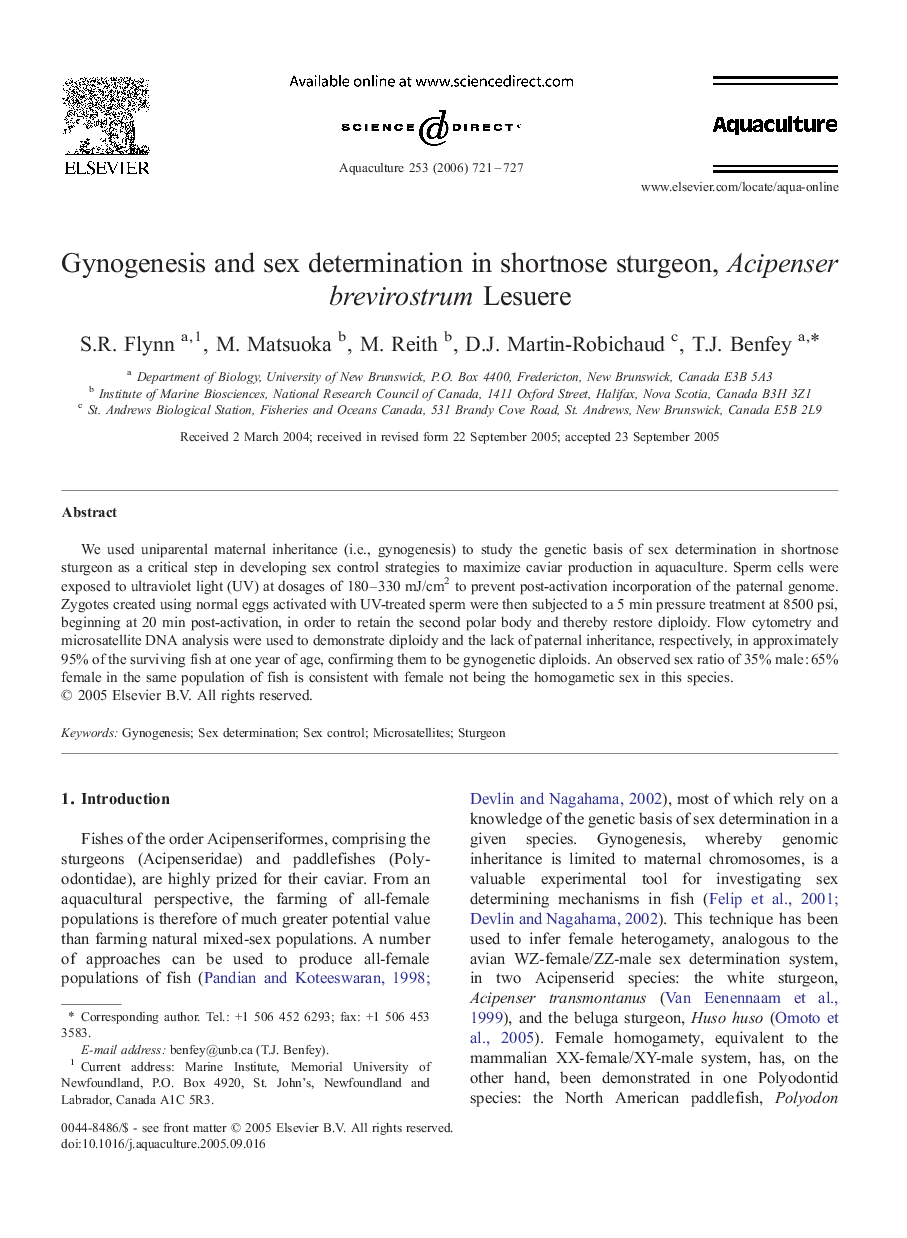| Article ID | Journal | Published Year | Pages | File Type |
|---|---|---|---|---|
| 2426279 | Aquaculture | 2006 | 7 Pages |
We used uniparental maternal inheritance (i.e., gynogenesis) to study the genetic basis of sex determination in shortnose sturgeon as a critical step in developing sex control strategies to maximize caviar production in aquaculture. Sperm cells were exposed to ultraviolet light (UV) at dosages of 180–330 mJ/cm2 to prevent post-activation incorporation of the paternal genome. Zygotes created using normal eggs activated with UV-treated sperm were then subjected to a 5 min pressure treatment at 8500 psi, beginning at 20 min post-activation, in order to retain the second polar body and thereby restore diploidy. Flow cytometry and microsatellite DNA analysis were used to demonstrate diploidy and the lack of paternal inheritance, respectively, in approximately 95% of the surviving fish at one year of age, confirming them to be gynogenetic diploids. An observed sex ratio of 35% male : 65% female in the same population of fish is consistent with female not being the homogametic sex in this species.
